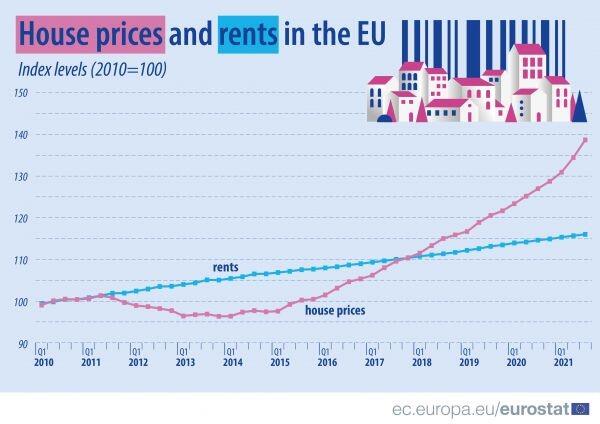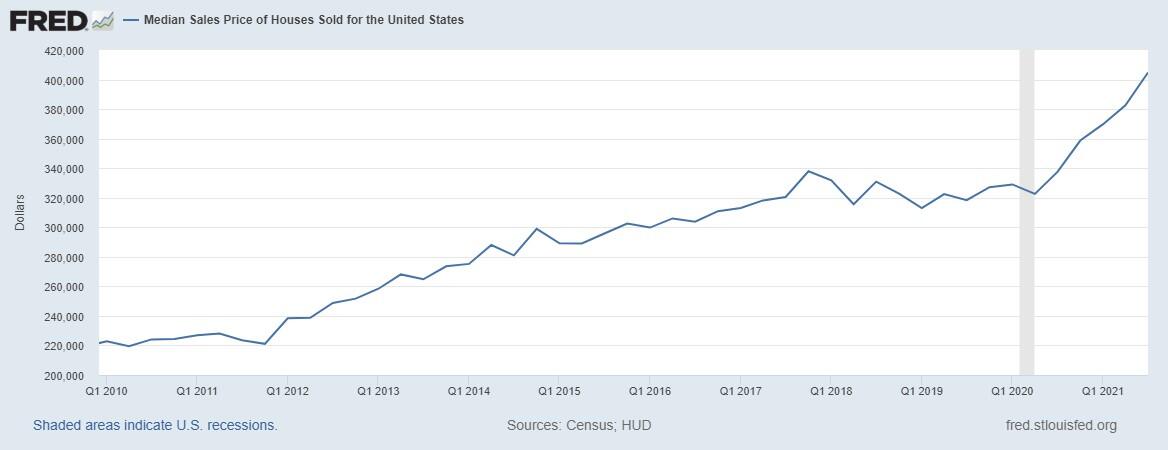The pandemic crisis has created persistent imbalances in economies and markets such as imbalances between supply and demand that have resulted in supply chain disruptions while exacerbating the already existing sharp imbalances in the real estate and labour markets. These imbalances combined with the rapid recovery of the economies, from the opening of the economy due to the vaccination of the population, led the inflation mainly from the middle of 2021 to a record high level.
The Fed chairman Jerome Powell promised that the central bank will use all its tools to prevent the consolidation of high inflation. In addition, the chairman of the Board of Governors of the Federal Reserve System stressed that, if necessary, the US Central Bank will raise interest rates further, however, he predicted that inflationary pressures are expected to last until March 2022.
The imbalances observed in 2021 will need to be normalized because otherwise, they could create conditions for persistence in the derailment of inflation. And so, the US Federal Reserve's 2% inflation target may not be met. Two of the components that we will need to take into account in estimating inflation are housing prices and rising Labor market costs.
The housing market
The Covid-19 pandemic upset the housing market. The historically low-interest rates on mortgages, combined with a shortage of housing, created a trend of rising prices which is expected to be maintained also in the year 2022. Buyers most likely will face similar trends to those of the last two years, namely high housing prices, low inventory.
Homes are much more expensive now compared to the older generations when they bought their first home. Population growth as well as the fact that people are now living longer than the older generations make the housing stock decrease. Even before the pandemic, there was low housing stock in most countries worldwide.
In the European Union it is indicative that in the third quarter of 2021, house prices increased compared to the same quarter of 2020 by 9.2% and by 8.8% in the euro area. Based on the year 2010, it is observed that since the middle of 2010, house prices in the EU have risen by up to 40% as shown in the chart below.
In the US the median sale price of homes sold nearly doubled from 2010 to the third quarter of 2021, as shown in the chart below retrieved from FRED, Federal Reserve Bank of St. Louis.
Covid-19 supply chain troubles have only made things worse. Though builders are trying to ramp up production, inventory will remain low. Tight supply, elevated demand and low mortgage rates will push housing prices so this component in the consumer price index seems likely to further increase.
The labour market
The sharp decline in the unemployment rate observed in most OECD countries as reflected in the charts below, combined with high job vacancy rates, and the significant proportion of employees who seek high-paying jobs, create an explosive mix in the Labor market.
The Big Quit has already begun to weaken as those who stopped working because of the pandemic are now returning to the job market. Once the Omicron wave is over, there will be a search for more jobs so even more workers will return. As the virus loses momentum and savings accumulated last year are now declining, wage inflation is expected to rise in 2022.
Employees who will be in a more favourable position will be those who are in areas with a shortage of manpower. These workers will be better able to negotiate wage increases and better working conditions than before the pandemic.
If housing prices continue to rise, unemployment continues to fall and labour market costs rise, then the 2% inflation target will be difficult to achieve, which will have a serious effect on monetary policy, and a direct effect on prices across the market spectrum whether it concerns stocks, bonds, commodities, currencies, and cryptocurrencies. So, it is very important to focus on inflation and look for the critical components that affect it.
CFDs are complex instruments and come with a high risk of losing money rapidly due to leverage. You should consider whether you understand how CFDs work and whether you can afford to take the high risk of losing your money. The Article/Information available on this website is for informational purposes only, you should not construe any such information or other material as investment advice or any other research recommendation. Nothing contained on this Article/ Information in this website constitutes a solicitation, recommendation, endorsement, or offer by LegacyFX and A.N. ALLNEW INVESTMENTS LIMITED in Cyprus or any affiliate Company, XE PRIME VENTURES LTD in Cayman Islands, AN All New Investments BY LLC in Belarus and AN All New Investments (VA) Ltd in Vanuatu to buy or sell any securities or other financial instruments in this or in in any other jurisdiction in which such solicitation or offer would be unlawful under the securities laws of such jurisdiction. LegacyFX and A.N. ALLNEW INVESTMENTS LIMITED in Cyprus or any affiliate Company, XE PRIME VENTURES LTD in Cayman Islands, AN All New Investments BY LLC in Belarus and AN All New Investments (VA) Ltd in Vanuatu are not liable for any possible claim for damages arising from any decision you make based on information or other Content made available to you through the website, but investors themselves assume the sole responsibility of evaluating the merits and risks associated with the use of any information or other Article/ Information on the website before making any decisions based on such information or other Article.
Recommended Content
Editors’ Picks
EUR/USD edges lower toward 1.0700 post-US PCE

EUR/USD stays under modest bearish pressure but manages to hold above 1.0700 in the American session on Friday. The US Dollar (USD) gathers strength against its rivals after the stronger-than-forecast PCE inflation data, not allowing the pair to gain traction.
GBP/USD retreats to 1.2500 on renewed USD strength

GBP/USD lost its traction and turned negative on the day near 1.2500. Following the stronger-than-expected PCE inflation readings from the US, the USD stays resilient and makes it difficult for the pair to gather recovery momentum.
Gold struggles to hold above $2,350 following US inflation

Gold turned south and declined toward $2,340, erasing a large portion of its daily gains, as the USD benefited from PCE inflation data. The benchmark 10-year US yield, however, stays in negative territory and helps XAU/USD limit its losses.
Bitcoin Weekly Forecast: BTC’s next breakout could propel it to $80,000 Premium

Bitcoin’s recent price consolidation could be nearing its end as technical indicators and on-chain metrics suggest a potential upward breakout. However, this move would not be straightforward and could punish impatient investors.
Week ahead – Hawkish risk as Fed and NFP on tap, Eurozone data eyed too

Fed meets on Wednesday as US inflation stays elevated. Will Friday’s jobs report bring relief or more angst for the markets? Eurozone flash GDP and CPI numbers in focus for the Euro.


